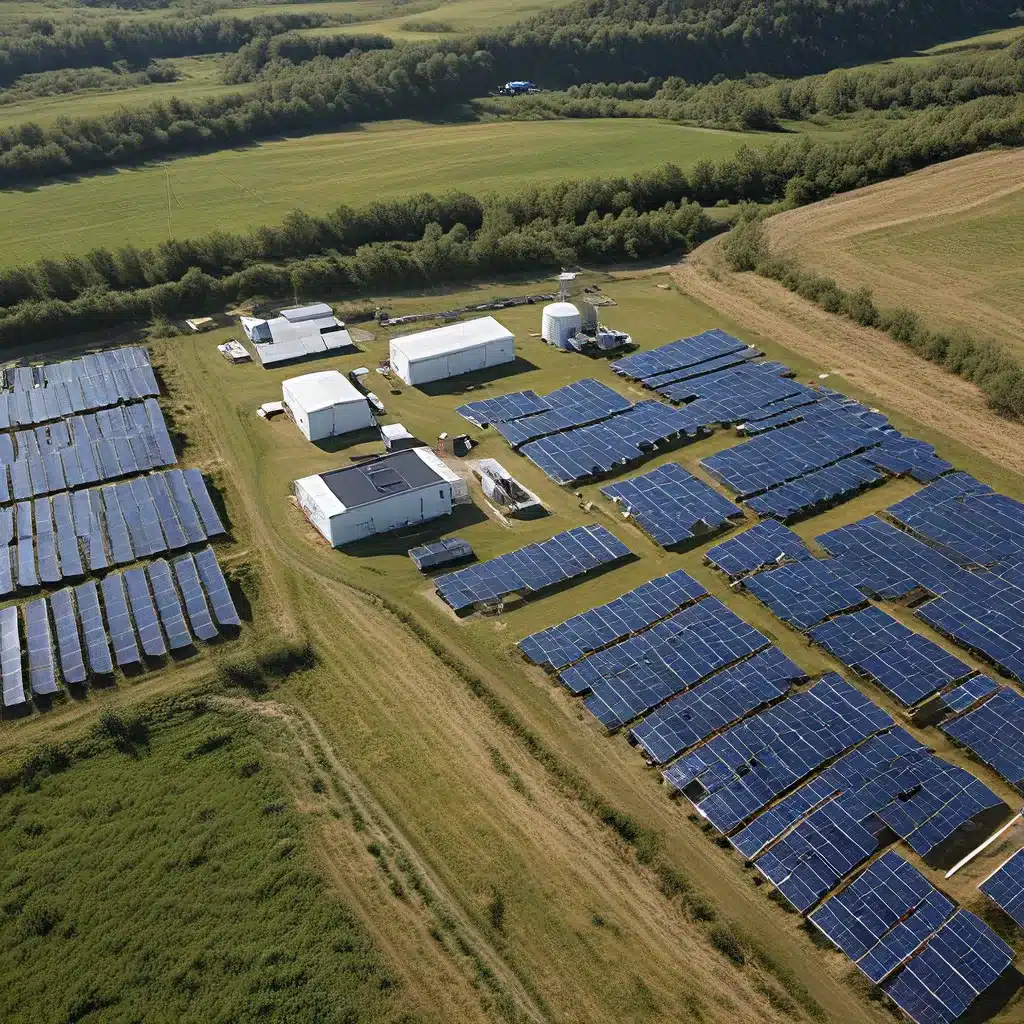
The Need for Reliable Energy Storage
As the world continues to grapple with the pressing issue of climate change, the demand for renewable energy solutions has never been higher. While the shift towards clean energy sources like solar, wind, and hydroelectric power has gained significant momentum, the challenge of energy storage has emerged as a critical piece of the puzzle. After all, what good are renewable energy sources if we can’t reliably store and distribute the power they generate?
This is where energy storage solutions come into play. These innovative technologies allow us to capture and retain the energy produced by renewable systems, ensuring a steady and reliable supply of power even when the sun isn’t shining or the wind isn’t blowing. And let me tell you, the advancements in this field are nothing short of remarkable.
Exploring the Energy Storage Landscape
When it comes to renewable energy storage, we’re not just talking about the good old-fashioned battery. Oh, no, my friends. The landscape of energy storage solutions is as diverse as the renewable energy sources themselves. From advanced lithium-ion batteries to cutting-edge flow batteries and even gravity-based storage systems, the options are truly mind-boggling.
Recent studies have shown that the global energy storage market is poised to grow exponentially in the coming years, driven by the increasing demand for reliable and efficient energy storage solutions. And let me tell you, the innovation in this field is truly breathtaking.
The Rise of Lithium-Ion Batteries
One of the most prominent players in the renewable energy storage game is the trusty lithium-ion battery. These power-packed marvels have become the go-to choice for a wide range of applications, from electric vehicles to grid-scale energy storage.
Lithium-ion batteries offer a number of compelling advantages, including high energy density, long life cycles, and rapid charging capabilities. And let’s not forget about the cost reductions that have made these batteries more accessible than ever before.
But the story doesn’t end there. Researchers and engineers are constantly pushing the boundaries of lithium-ion technology, exploring ways to improve performance, increase safety, and reduce environmental impact. From solid-state lithium-ion batteries to lithium-sulfur batteries, the future of this technology is truly exciting.
Unlocking the Potential of Flow Batteries
While lithium-ion batteries may be the current darling of the renewable energy storage world, they’re not the only game in town. Another innovative technology that’s been gaining traction is the flow battery.
Flow batteries operate on a fundamentally different principle than their lithium-ion counterparts, using liquid electrolytes to store and release energy. This unique approach offers a number of advantages, including scalability, long lifespans, and the ability to decouple power and energy capacity.
But the real magic of flow batteries lies in their versatility. These systems can be tailored to meet the specific needs of a wide range of applications, from utility-scale energy storage to off-grid renewable systems. And with ongoing research into materials and design, the future of flow battery technology is looking brighter than ever.
Gravity-Based Energy Storage: The Unexpected Solution
Now, if you thought lithium-ion and flow batteries were the only players in the renewable energy storage game, you’re in for a surprise. Introducing gravity-based energy storage – a technology that’s turning the traditional notion of energy storage on its head.
Gravity-based storage systems work by using excess renewable energy to lift heavy weights or move massive blocks of material to a higher elevation. When the energy is needed, the weights or blocks are lowered, and the resulting kinetic energy is converted back into electricity.
This innovative approach offers a number of advantages, including long lifespans, low maintenance, and the ability to scale up to meet the needs of large-scale energy storage. And the best part? Gravity-based storage systems don’t rely on rare or precious materials, making them a sustainable and cost-effective solution.
The Future of Renewable Energy Storage
As we’ve explored, the world of renewable energy storage is a dynamic and rapidly evolving landscape. From the ubiquitous lithium-ion battery to the cutting-edge flow battery and the unexpected gravity-based storage systems, the options for reliable and efficient energy storage are truly remarkable.
But the story doesn’t end here. Researchers and innovators around the world are pushing the boundaries of what’s possible, exploring new materials, designs, and approaches to energy storage. And let me tell you, the future is looking bright – both figuratively and literally.
Firewinder, a leading provider of renewable energy solutions, is at the forefront of this exciting journey. By partnering with some of the brightest minds in the industry, Firewinder is developing and deploying the next generation of energy storage technologies, powering the transition to a cleaner, more sustainable future.
So, what does the future hold for renewable energy storage? The possibilities are endless, and the potential to transform the way we generate, store, and use energy is truly astounding. It’s an exciting time to be a part of this energy revolution, and I can’t wait to see what the future has in store.

